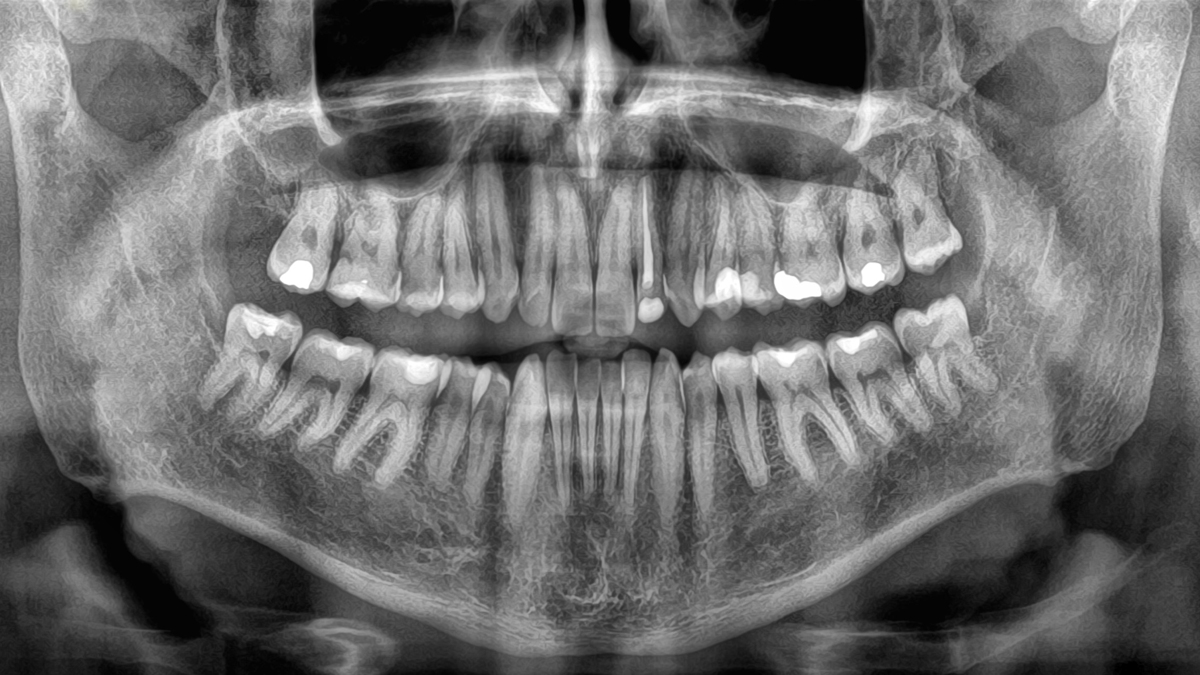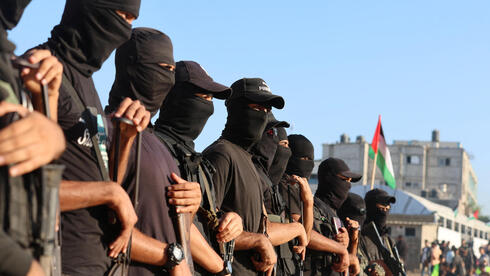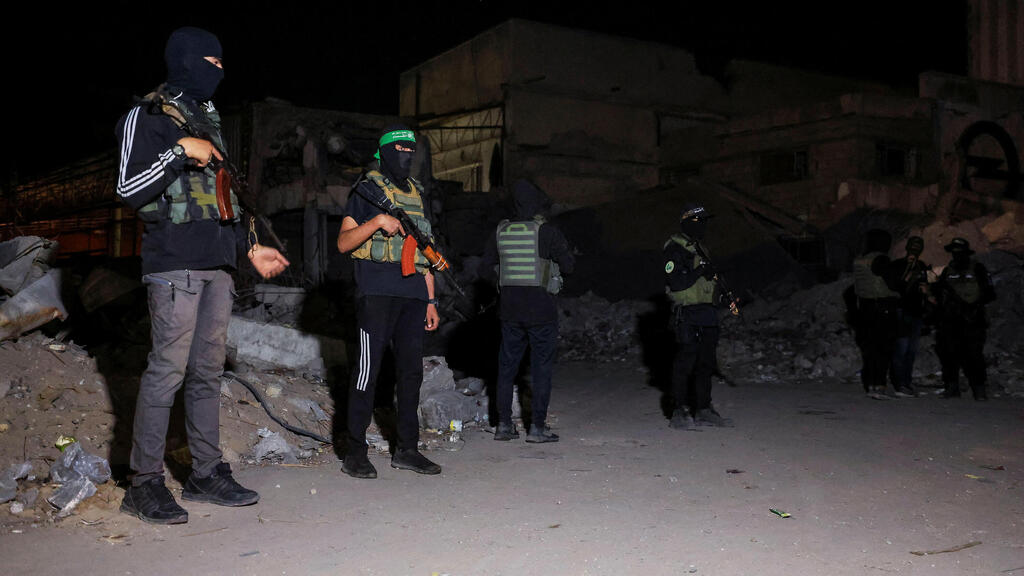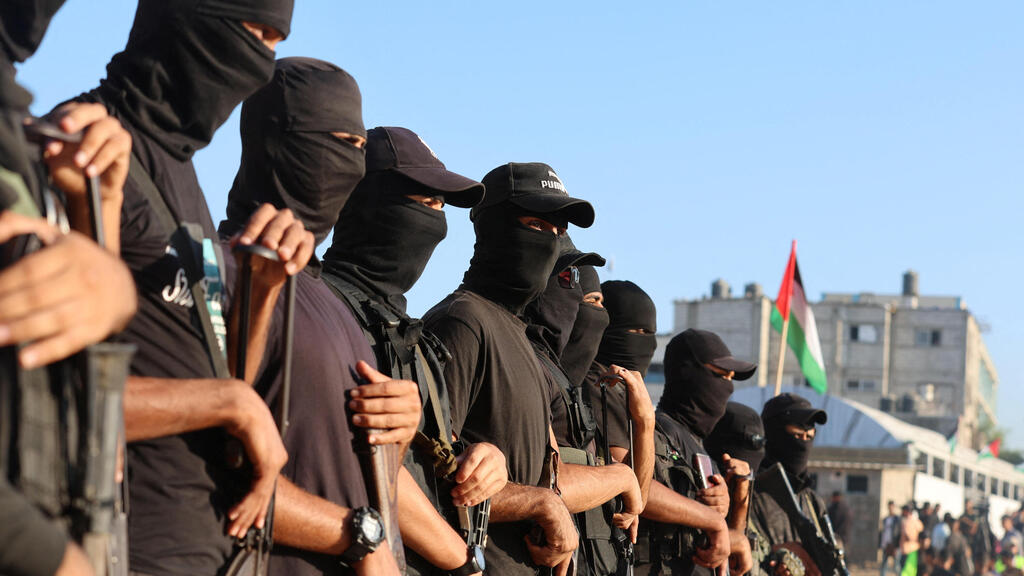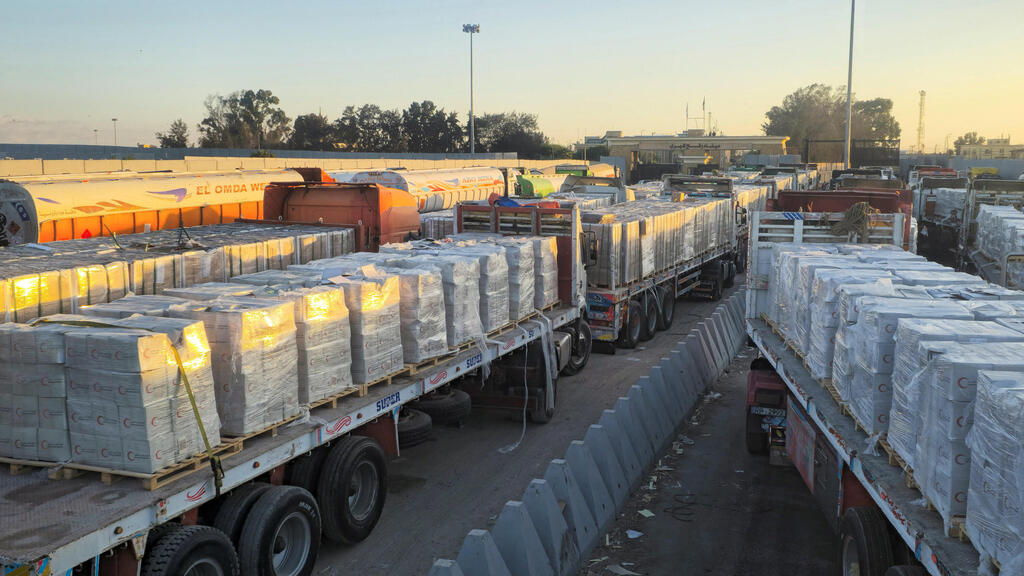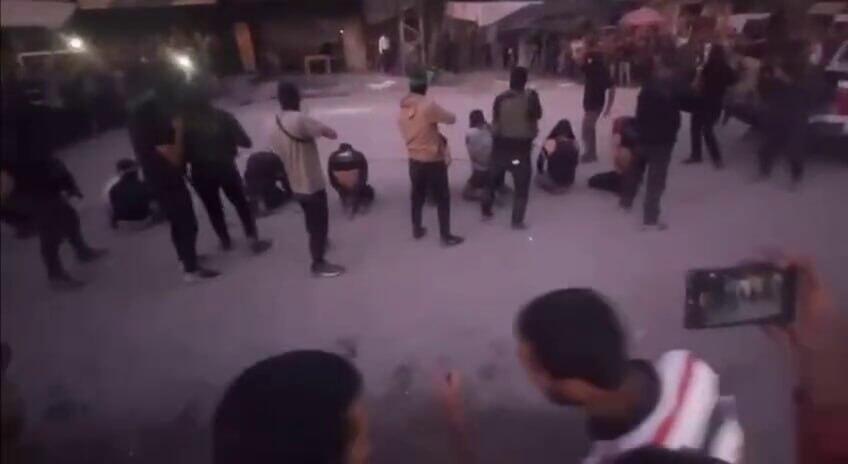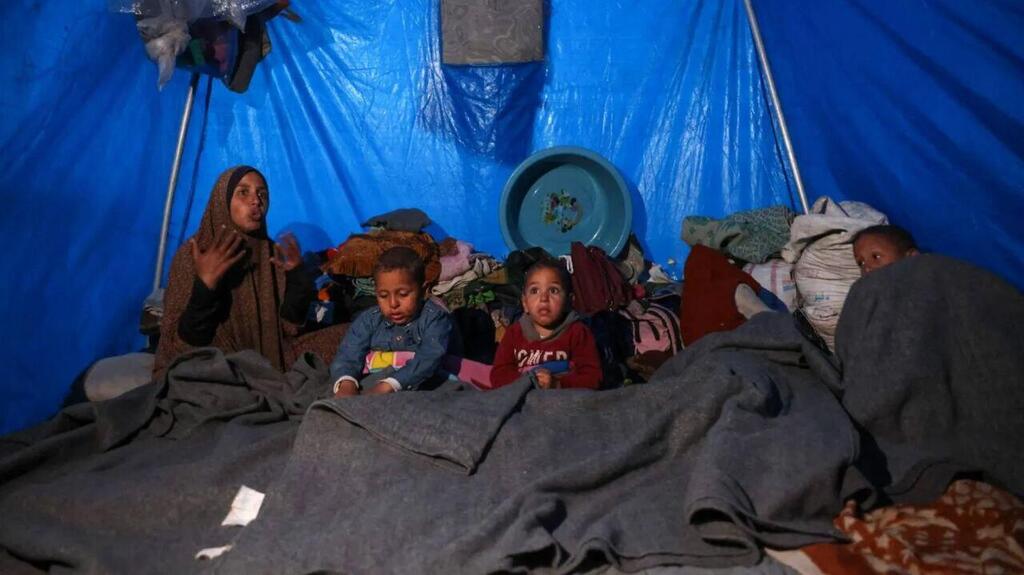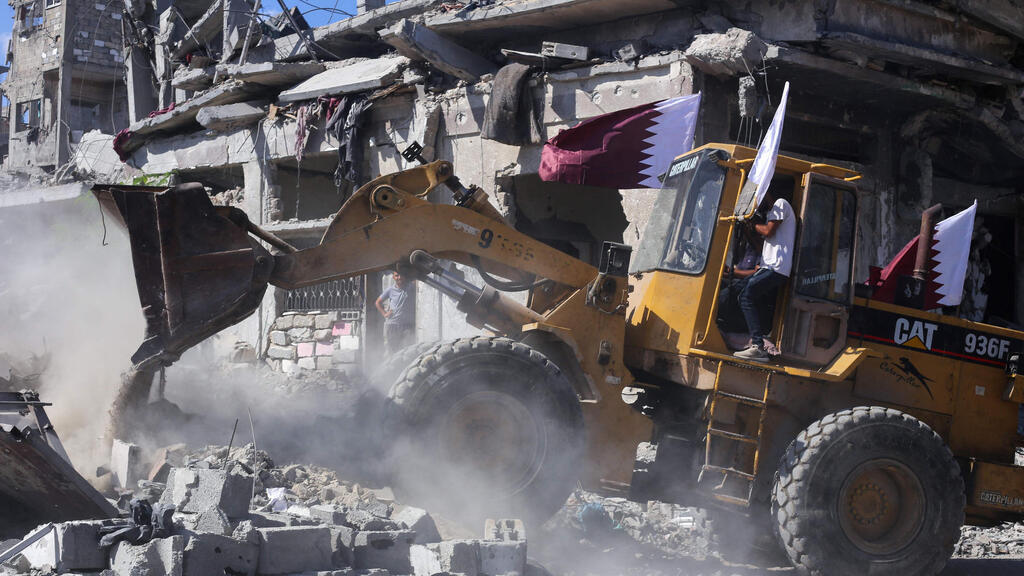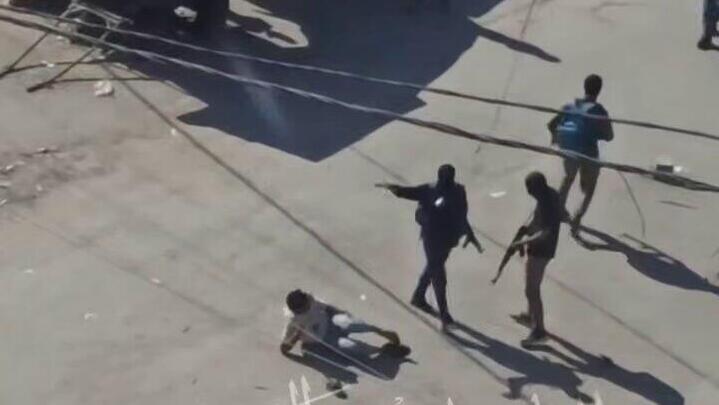More than two years after the war began, Gaza is changing again. Hamas is working to reestablish control, Israel hopes demilitarization will hold, and the international community is searching for a formula to rebuild and stabilize the shattered enclave. On the ground, however, amid the flags of Qatar and Egypt on bulldozers and tents rising in ruined camps, most Gazans share a single emotion — deep exhaustion from war and from life among the ruins.
According to the “Yellow Line” map, Israel currently controls more than 58% of Gaza’s territory. The southern city of Rafah remains under full Israeli control, with large sections of Khan Yunis still monitored by the IDF. In northern Gaza, neighborhoods like Beit Lahia and Shuja’iyya are nominally under Israeli oversight but see a growing Hamas presence through its “security forces.” The United States wants to designate these Israeli-held areas as “safe zones,” where Gazans could live without Hamas’ rule of terror.
Hamas terrorists retaliate against wanted militants
With the ceasefire in effect, armed Hamas operatives quickly returned to the streets of Gaza in full uniform. Internal security and police units reappeared at major intersections, and local civil authorities — mayors, district heads, and bureaucrats — resumed activity. Hamas even appointed new governors, many of them former military commanders, and erected signs in surviving neighborhoods declaring: “We will bring Gaza back to life.”
For residents, the message was chillingly clear. “I thought after all the suffering, Hamas would leave us alone,” said Suliman, a resident of central Gaza. “But no. As soon as the war ended, when people were ready to return to their land, we saw Hamas men everywhere — some in uniform, some not. It’s like nothing happened, like we’re back to October 6. People are disappointed and scared.”
Another young Gazan told Ynet that “if there were free elections here, 90% would want Hamas gone. Their resistance only brought destruction. If they insist on staying, the world won’t support them.”
Despite widespread devastation, Hamas still enjoys a base of support among roughly one-third of Gazans, down from nearly 50% before the war — a smaller decline than expected given the disaster it brought upon the Strip. According to a new poll by the Palestinian Center for Public Opinion (PCPO), 71% of Gazans believe “there is no winner in this war.” Most now yearn less for “resistance” and more for stability and survival.
Hamas, however, has announced it will not allow a “security vacuum” in Gaza — even though, under the Trump plan, it was expected to disarm and relinquish control. Instead, it has launched a new campaign to reassert dominance internally, under the banner of “restoring governance and security.”
“The problem,” said one Gaza source, “is that many of these clans live in areas now under Israeli control. Hamas can only go after its enemies where it still has ground presence — it doesn’t shoot where the IDF is.”
Turkish-Arab journalist Yusuf Oglu noted that Hamas is trying to show the world it can govern like the Palestinian Authority in the West Bank: “It’s their way of proving they deserve international legitimacy — even if that means killing their opponents.”
Palestinian Authority President Mahmoud Abbas condemned the wave of executions and public torture in Gaza, calling them “heinous and unacceptable crimes.”
Prominent anti-Hamas activist Hamza al-Masri criticized the crackdown in an interview with Al Arabiya: “No one can be judge, ruler, and executioner at once,” he said. “Instead of hunting people in so-called security operations, Hamas should find humane solutions for the thousands still homeless.”
Al-Masri added: “If Hamas can really catch spies, it should start with those inside its own ranks. How did Israel find Mohammed Deif? Someone gave that information. These are the questions that matter, not blaming families who lost hundreds of members in the war.”
In recent weeks, local reports describe meetings between al-Qassam Brigades commanders and major Gaza clans to secure cooperation — or compliance. Hundreds of young men have been recruited back into Hamas’ internal forces to “restore order.”
The group also launched a campaign dubbed “Project Self-Surrender,” calling on alleged collaborators to turn themselves in. But Gaza activists warn it’s a trap: “People who go in disappear,” one resident told Ynet. “In some cases, their bodies were found two days later.”
Despite the chaos, reconstruction has begun. In Khan Yunis and Deir al-Balah, bulldozers bearing Qatari and Egyptian flags are clearing debris — a small sign of renewal. According to UN estimates, 55 million tons of rubble now cover the Strip, and 425,000 housing units are partially or completely destroyed. The cost of rebuilding is estimated at $70 billion.
The UN Development Program (UNDP) said at a conference in Geneva that “several Arab states, the U.S., and Europe have shown positive indications of support,” but warned the process will be “long, complex, and full of challenges.”
President Donald Trump has called for a regional rebuilding effort involving the U.S., Israel, Arab states, and private investors — envisioning a futuristic Gaza with industrial zones and rail links. But Israeli security officials fear that Hamas will redirect foreign funds — especially from allies like Qatar and Turkey — toward rebuilding its military infrastructure and tunnels.
For now, hundreds of thousands of Gazans live in tents, schools, or makeshift shelters of plastic sheeting — and even among the ruins of their homes. “We live inside what used to be our house,” a woman from Shuja’iyya told Reuters. “There’s no water, no electricity — only dust and memories.”
Meanwhile, economic gaps are widening again. Hamas officials, traders linked to the organization, and local elites enjoy access to goods and electricity, while ordinary Gazans struggle to afford bread. The UN warns that recent drops in food prices may be temporary: “Without a stable civilian supply system, Gaza could quickly return to severe shortages and total dependence on international aid.”
Amid this desperation, disturbing reports are emerging of women receiving sexual propositions in exchange for food or aid. “Our society is collapsing — morally and economically,” said one Gaza activist. “There’s no money, no work, no future. Only survival.”
First Appeared on
Source link






